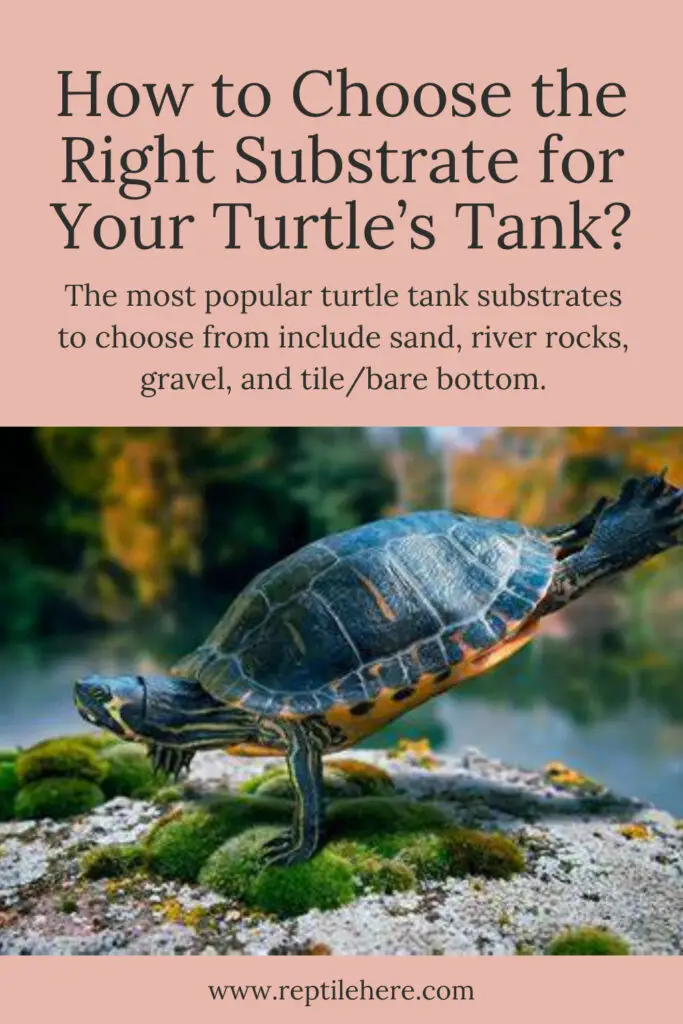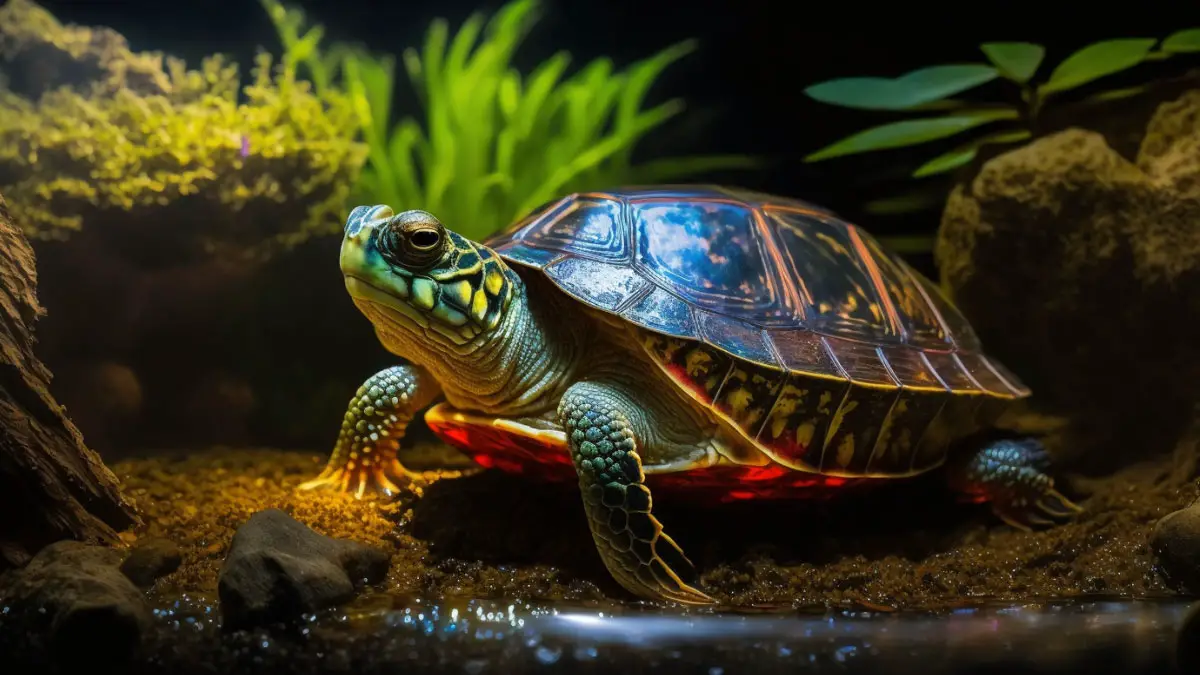How to Choose the Right Substrate for Your Turtle’s Tank?
The right substrate can help improve your turtle tank’s overall aesthetics while making it look more naturalistic and interesting for your pet compared to a bare bottom. However, there are different types of substrates for you to choose from.
How to choose the right substrate for your turtle’s tank? The most popular turtle tank substrates to choose from include sand, river rocks, gravel, and tile/bare bottom. Each of them is good for your turtle but you should weigh their advantages and drawbacks to help you pick the best one that matches your preferences.
In this article, you’ll discover more details about choosing the right substrate for your turtle tank. We’ll discuss the benefits and drawbacks of various substrates to help you choose the rig one for you. Plus, we’ve bonus tips for creating a safe and hygienic environment for your pet turtle.
How to Choose the Right Substrate for Your Turtle’s Tank?
Contents
As we have just said above, there are many substrate options to consider for your turtle tank—including the river rocks, sand, gravel, and tile or bare bottom
While all of them will work for your turtle tank, they have advantages and disadvantages that you must consider when choosing the right one for you.
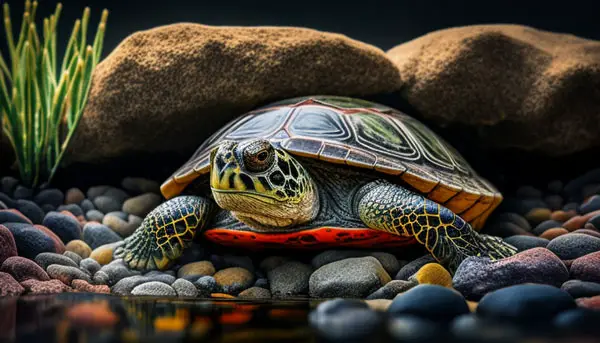
Here are the most common types of substrate to consider for your turtle (and their pros and cons):
Gravel
This is one of the most common types of substrates you’ll find in the turtle tanks of most turtle owners as well as fish owners.
It’s readily available and comes in different colors for you to choose from. It’s also pretty easy to use and its size makes it look pretty natural in your turtle tank.
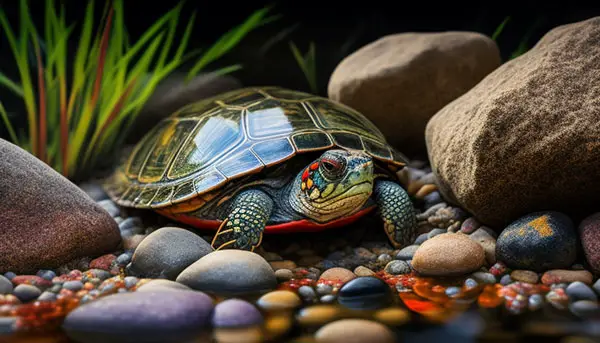
Advantages:
- The biggest benefit of using gravel for your turtle tank is that it’s super-easy to clean. This is due to its small size which makes it hard for food particles or algae to hide under it.
- The substrate is also heavy enough to not be easily sucked during cleaning.
- You’ll also like how great and natural gravel looks in your turtle tank
- Gravel comes in a variety of colors such as black, white, red, blue, etc. for you to choose from.
Drawbacks:
- One of the reasons you may want to avoid using gravel for your turtle tank is due to its small size (pretty much the size of your turtle’s food) which may attract your turtle to eat it. This can lead to various digestion issues, including the risk of impaction when the stones get stuck in their digestive system.
- Some sellers also tend to add calcium to gravel. While this nutrient is essential for your turtles, consuming too much of it can lead to shell pyramiding, a serious health issue you don’t want to get to your turtle.
River rocks
River rocks have several advantages that make them a popular substrate choice for many pet owners as discussed below.
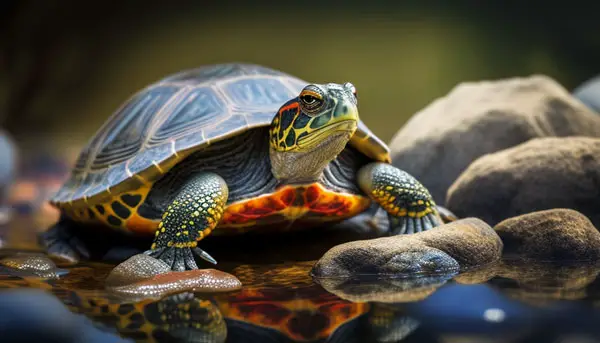
Advantages:
- These rocks are pretty big, eliminating the possibility of your turtle eating them and developing impactions in its digestive system. This makes it a safer option over the gravel.
- Another benefit of river rocks is that they’re pretty heavy, so your turtle can’t easily displace them in their enclosure. The rocks are also pretty easy to remove, which comes in handy when you’re giving your turtle tank a cleanup.
- Because the river rock is from the rivers, it has been run over by water and developed a smooth and well-rounded shape. As such, there are no rough edges that can easily injure your pet turtle.
Drawbacks:
- One major drawback of river rocks for turtle tanks is that they can make your tank dirty quickly. The rocks create plenty of large spaces between them where waste and leftover food particles can easily get trapped, turning your tank water dirty pretty quick.
- Cleaning the waste hidden between these rocks won’t be a walk in the park.
Quick Tip: You can get around this drawback of river rocks trapping waste by using a combination of sand plus river rocks as a substrate for your turtle tank. The sand will seal all those spaces between the rocks that make cleaning a challenge. Plus, this combination will give your tank an even more interesting look.
Sand
Sand is probably the most popular type of substrate compared to gravel and river rocks. However, it also has its highlights and low lights.
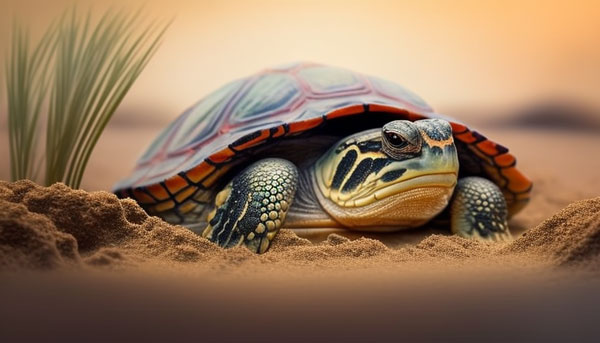
Advantages:
- One of the benefits is that it is natural-looking so it will help mimic your turtle’s natural habitat.
- It is also pretty small compared to gravel, meaning even if your turtle eats it, there’s a low risk of impaction.
- Sand in turtle tank is also easy to clean. And the fact that it covers the entire bottom of your turtle tank leaves no space for dirt to reach the bottom of the tank.
- Probably the best part about sand is that it comes in many different types and colors to choose from depending on your personal preferences.
Drawbacks:
- You need to be careful with the type of sand you get for your turtle tank. The one sold at pet stores is usually fine. But if you’re sourcing it from somewhere else, you should ensure you don’t get one that’s too fine or powdery as it can easily turn your water cloudy.
- Also, small particles from play sand can get into your filter system and impact its working mechanism and possibly damage it.
Bare bottom or tile substrate
Some turtle owners also use the tile to line up their turtle tank bottoms. The major upsides and downsides of this turtle substrate are listed below.
Advantages:
- One of the benefits of using a tile or bare bottom is its smooth surface. This means that waste is highly visible on it and is super-easy to clean as you don’t have to worry about waste setting in crevices or little openings.
- Also, you don’t have to worry about sucking up any little particles during cleaning.
Disadvantages:
- This substrate can make turtle waste get stuck underneath its surface. However, this shouldn’t be a problem if you periodically clean your turtle tank. You’ll be able to put everything apart for a thorough clean-up and get to the turtle hidden underneath.
- The smooth-looking surface makes this substrate look less natural, so this is something you’d want to keep away from if you want to create a naturalistic turtle enclosure.
- It can also make your tank look dirty as it visibly shows any turtle waste that falls on it
- Don’t forget that you’ll need to resize the tile in order for it to fit in your turtle tank bottom.
Additional tips for choosing the right substrate for your pet turtle:
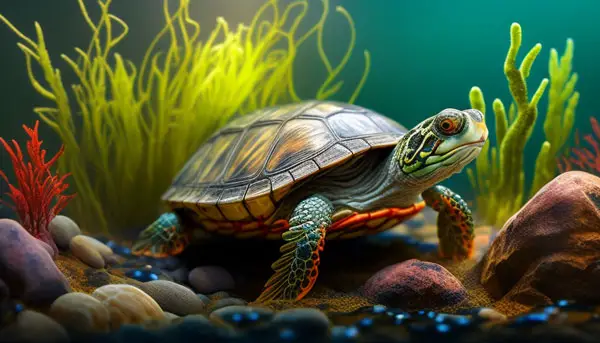
- The right type of substrate for your turtle tank should enable you to create a safe and hygienic environment for your pet turtle.
- The substrate itself should be easy to clean and maintain so you’ll be able to provide your turtle with clean habitat.
- Stay away from any material that can cause a choking hazard to your turtle or impaction (be careful about the size of the substrate).
- Ensure the substrate you buy doesn’t contain any harmful chemicals/toxins that may bring harm to your pet.
Final Verdict
Now you know how to choose the right substrate for your turtle tank. As we’ve discussed in the above substrate guide, the most common options include sand, gravel, and river rocks. Tile is also an ideal substrate but it’s less common.
Having gone through the advantages and disadvantages of each of these substrates, you should now be able to easily decide which one will work for your turtle tank setup and meets your personal preferences.
